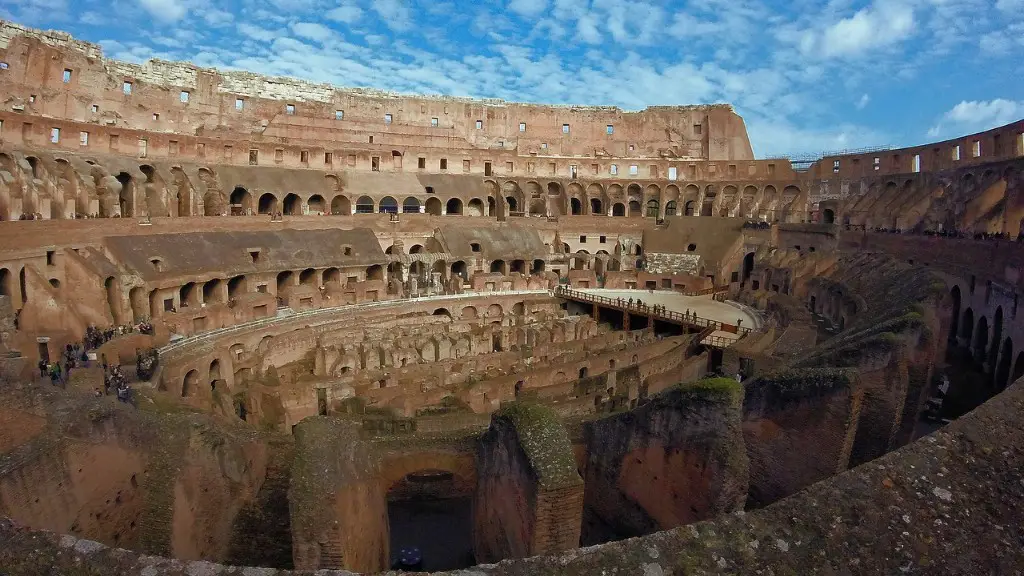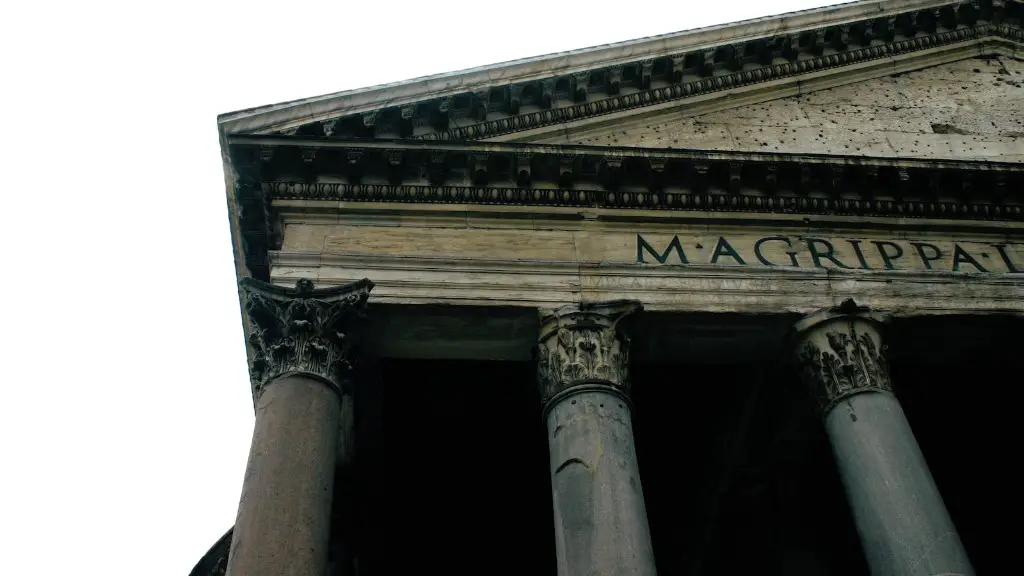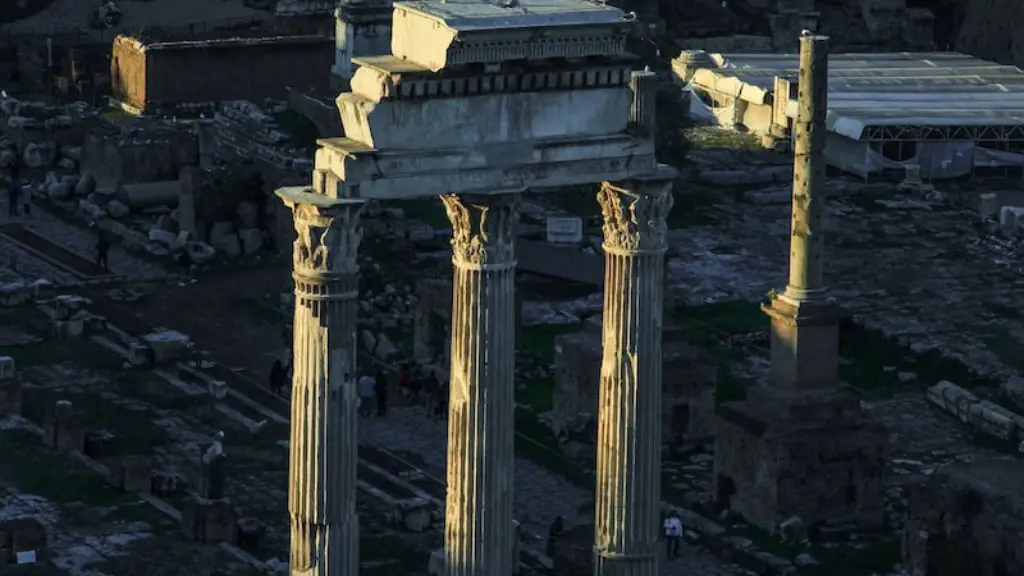Religious Beliefs
Houses in ancient Rome were immensely important, not just as a place of shelter, but to the Romans, a house also had strong religious connotations. It was believed that a person’s home was the springboard to their spiritual relationship with the gods. Even before the house was built, Roman homes had to have their location ‘sanctified’, a religious procedure associated with honoring the gods Hera and Jupiter. Furthermore, the house was seen as a representation of the household’s place in the prevailing power structure. This idea was further strengthened by the fact that many of the gods, particularly Vesta, the goddess of the hearth, resided in the home.
Romans attributed divine powers to every aspect of the house, from it’s construction and decoration to the layout, which was believed to contain secret religious symbolism, symbolism that was only seen by the gods and those who were initiated into the mysteries of their faith. In the minds of the Romans, their home represented the sanctity of their religion, and thus the majority of homes were built with great care and attention given to their construction and decoration.
In addition, the house was also a reflection of the standing of the family within the wider community. Houses in ancient Rome were decorated with floors and walls that were opulently decorated with marble and other rich materials. The more wealthy the family was, the more luxurious the décor of their homes was. Thus the appearance and layout of the home provided a kind of visual screening – showing just how powerful the family was and how well connected they were with the gods.
Social Significance
Houses in ancient Rome played an important role in the social life of the people as well. The home was a place where families gathered and celebrated life events, ranging from the marriage of a child to the birth of a new grandchild. It was also a place for communal gatherings, hosting rituals such as libations and offering of prayers to the gods. The home was a place to display wealth and status, and a place to entertain important guests. Finally, the home was a place where the family could come together and express its shared values and collective identity.
Family life was of great importance in Roman culture, and was highly respected. Marriage was a strong institution, and the family home was seen as a sacred shelter. It was a place where families could live without fear, in an atmosphere of safety and security. It was a place where children could be raised and stay close to the family, surrounded by the love and protection of their parents. The idea that the family home was a refuge was so strong, that it was believed that to leave the home was to be in danger, as well as to risk being cursed by the gods. Thus, it was of great importance to the Romans.
Political Significance
Houses in ancient Rome also had a strong connection to politics. Every Roman family had the right to vote, and they were expected to exercise this right in the comitium, the assembly hall which was located in their family home. This right was taken seriously, and the way that a family voted was also seen as a reflection of their loyalty and commitment to the state. Furthermore, the doctrine of pietas, an ancient Roman concept which emphasized the importance of loyalty and respect for the gods, was observed in the home, as a form of reverence for the gods and for the state.
The importance of the house extended beyond the family, as it was seen as a reflection of the political loyalty of the citizen. The quality of the home, as well as its decorations and importance within the community, reflected the power of the individual and their commitment to the state. As such, the house in Ancient Rome was an important symbol of loyalty, and a powerful reminder of the importance of the individual within the wider political context.
Economic Significance
The house also had an important economic significance. Houses in ancient Rome were often used as financial investments, and were seen as valuable resources. Individuals would often use their homes as collateral to secure loans, and the property could be used to purchase goods and services. Furthermore, the house was also a source of income, as wealthy families often charged tenants to live on their property. As such, the Roman house was not just a place of rest and relaxation; it was also an important source of income for the family.
The importance of the house in Ancient Rome is undeniable and cannot be overstated. While the house was a place of shelter and was essential for living a good life, it was also a place of spiritual importance and an important symbol of the families’ involvement in the state and wider society. As such, the house was seen as an integral part of Roman culture, and its importance was felt throughout Roman society.
Urban Planning
It is not surprising that the Roman house was a source of great importance, as it was a reflection of the advanced urban planning that was a major factor in Roman civilization. Houses in ancient Rome were strategically placed in cities and were often the only places where the population could live. These cities were built in a grid pattern, making it easier for people to find routes between destinations and making it easier for trade and commerce to occur.
The cities were planned so that the streets were wide enough for people to move around easily. Moreover, the houses in ancient Rome were also built with a balcony on the upper floor which allowed for people to sit and enjoy the sun, something that was especially important for Roman culture. Finally, the design of most homes included an atrium, or central garden, which was seen as a symbol of the house’s ‘introversion and privacy’. This served to emphasize the importance of the house in Roman society and its role as a sign of status and loyalty.
Architectural Style
The Roman house was also distinguished by its architectural style, which was intended to be aesthetically pleasing and demonstrate the power of the individual. The most common style used in the construction of houses was the insulae, a series of six or more connected buildings which were typically two stories high. Buildings were also often adorned with statues, mosaics, and other decorations, which served to further emphasize the importance of the house.
The Romans also used various architectural techniques to create unique designs. They used columns and arches to create a more stable structure, as well as porticos, which were used to provide shade and ventilation. The houses were also built to make use of natural light and were made to be as energy efficient as possible. Furthermore, the Romans designed their homes to be reasonably soundproof, so that the peace and quiet of the family could be preserved.
Cultural Significance
Finally, the house in ancient Rome also gained importance because of its cultural significance. Rome was an era of many legends and stories, which were deeply embedded in Roman culture. As such, the house was often seen as the source of the most powerful pieces of literature and art. This was an important part of the culture of the time, and many of today’s works still owe a great deal to the ancient Roman idea of the home.
Houses in ancient Rome were immensely important. Not only were they necessary for shelter, but they were also seen as a reflection of the family’s place in the prevailing power structure, and a symbol of the family’s loyalty to the state. Furthermore, the house was also a place of social gatherings and entertainment, as well as a place for the family to express its shared values. Finally, the house was also seen as a source of financial and architectural importance, as well as a source of cultural significance.



